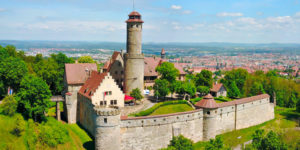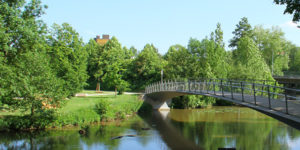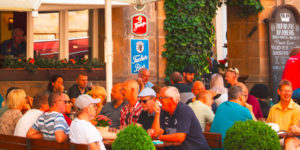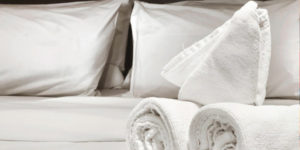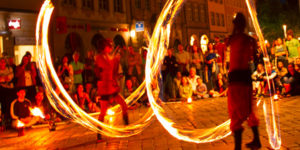Apartment at Schillerplatz
The apartment at Schillerplatz extended over two floors at that time. While the living room and kitchen were on the second floor, the sleeping and working areas, better known as the Poetenstübchen (the poet room), was located in the attic.
His 100th anniversary of death in 1922 and his 150th birthday in 1926 led to a kind of renaissance for Hoffmann. Around 1930 the Hoffmann Museum opened on the grounds of his former residence, on the façade of which the Verkehrs- und Verschönerungsverein attached a stone plaque with the inscription “E.T.A. Hoffmann Apartment and Museum”. Over time, the museum was expanded to include the entire house and the garden area.
Unfortunately, no original objects from the inventory have survived, but a visit is worthwhile. Thus a guest book is exhibited, which contains in the years from 1928 to 1954 3269 perpetuated visitors. But also stage designers, like Wolfgang Clausnitzer, always try to furnish the house in such a way that it gives you as a visitor an authentic impression of the writer’s way of life.
Habitat of an artist
Not only a commemorative plaque today points to Hoffmann’s lifetime in Bamberg. The writing tomcat Murr 2010 was also punched by Bernd Gecius in copper sheet and attached to the wall. The illustration goes back to the first edition of “Leben-Ansichten des Katers Murr” (“Life Views of the Cat Murr and Fragmentary Biography of the Chapel Master Johannes Kreisler in Random Waste Sheets”), the cover of which showed the figure of the cat.
The wooden entrance door has been preserved in its original state and was already touched and opened by Ernst Theodor Amadeus and his wife, but at that time with two wings. To the left of the door, a window is now used to show a self-portrait of the writer and the opening hours of the house. Through the glass you can take a look inside the house, directly at a workplace of Hoffmann.
As soon as you enter the house, it quickly becomes clear what a great artist once lived here. The ground floor recalls Hoffmann’s idea of the “many selves in oneself” by creating a mirror motif that interlocks and overlaps. This is an example for Hoffmann’s passion for mirror motifs. On the first floor, selected literary works by Hoffmann can be admired in their reproductions. Among them, “der Sandman”, “Meister Martin der Küfner und seine Gesellen” (“Master Martin, the Cooper and his Journeyman”) and the Knarrpanti-parts of “Meister Floh” (“Master Flea”).
The narrow stairwell is used to show illustrations (P.C.Geissler, 1840) in paper cutouts (Wolfgang Müller, 2009), which are part of a paper theater and depict the fairy tale “Nussknacker und Mäusekönig” (“The Nutcracker and the Mouse King”) by Hoffmann.
On the second floor an opera box from the time of the performance of Hoffmann’s most famous opera “Undine”, based on the text by Friedrich Baron de la Motte-Fouqué, was reconstructed. The reproduction of the box refers to decorative action designs, as the Berlin Schauspielhaus, which was the venue of the opera, burned down on July 29th, 1817.
Between the upper floor and the Poetenstübchen you can see a hole in the ceiling that already existed during Hoffmann’s lifetime. He used it to talk with his wife but it soon became a humorous instrument to tell her all sorts of silly things through the opening. Today a hanging drawing of this use by Hans Günter Ludwig is immortalized in the opening.
If you want to follow the footsteps of the great all-round artist E.T.A. Hoffmann, then the House of E.T.A. Hoffmann at Schillerplatz is an ideal start point.

